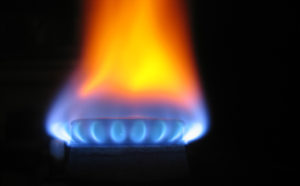 Natural gas gained for the first time in four days as a cold blast moves into the northern US, followed by a stronger one late in the week. Gains, however, were capped as the remainder of the US continues to enjoy seasonal or higher temperatures, with a thinner-than-average inventory decline likely to be reported by the EIA on Thursday.
Natural gas gained for the first time in four days as a cold blast moves into the northern US, followed by a stronger one late in the week. Gains, however, were capped as the remainder of the US continues to enjoy seasonal or higher temperatures, with a thinner-than-average inventory decline likely to be reported by the EIA on Thursday.
Natural gas for delivery in April traded 2.32% higher at $2.779 per million British thermal units at 9:18 GMT, shifting in a daily range of $2.795-$2.740. The contract slid 0.4% on Monday to $2.716 after it settled the previous week 4% lower.
According to NatGasWeather.com, natural gas demand in the US will rise from low to moderate, compared to normal, through March 23rd, with a neutral weather trend for the following seven days.
The majority of the country remains engulfed by seasonal or slightly warmer conditions, with widespread highs in the 60s and 70s, and 80s over the Southeast and Southwest. The western and central US will continue to enjoy warmer-than-usual weather throughout the week, although Texas and the east-central regions experience seasonal or slightly cooler temperatures due to moist Mexican weather systems.
Highs across the Midwest and Northeast will hover in the 40s and lower 50s through the end of the month as a series of Canadian cold blasts infiltrate the US, but with a limited reach.
A cold front will impact the northern US today into Wednesday, carrying rain and snow, but any truly cold readings will only impact the Great Lakes and Northeast, NatGasWeather.com said. A fresh and more significant blast will follow Friday into the Midwest and Northeast and will last through early next week, spurring stronger heating demand during its duration.
As next week progresses, Canadian weather systems will bring rain, snow and below-normal temperatures to the upper Great Lakes and East, while the West remains mostly warm and dry. The central and southern US will experience near-normal readings as weak weather systems bring a brief period of cooling before warmer conditions return shortly afterwards.
Readings
According to AccuWeather.com, colder-than-usual weather will establish over New York as of tomorrow as lows drop to 28 degrees Fahrenheit, 8 below normal, with temperatures set to remain slightly below average through the end of the month. Chicago will enjoy seasonal weather on March 19th as readings range between 37 and 48 degrees and will hover near the average throughout March, inducing a moderate level of heating demand.
Down South, highs in Houston in the next four days will reach 75-80 degrees, compared to the average 74, before easing to the lower 70s over the next six days. On the West Coast, the mercury in Los Angeles will peak at 81 degrees today, 11 above usual, with warmer-than-seasonal weather set to persist for the rest of the month.
Supplies
US natural gas stockpiles fell by 198 billion cubic feet in the seven days through March 6th, the EIA reported last Thursday, a withdrawal in the upper range of expectations and above the five-year average drop of 116 bcf. Total gas held in US storage hubs amounted to 1.512 trillion cubic feet, expanding a deficit to the five-year average of 1.737 trillion to 13.0%, or 225 bcf, from 7.7% a week earlier. Inventories stood at 1.029 trillion a year ago, 46.9% below current levels.
This was the last in a series of above-average withdrawals as the widespread thaw across the US curbed significantly national heating demand. Moreover, this Thursday’s supply report for the seven days ended March 13th trended lower as last week’s cold blast across the North played out less impressive. The agency is expected to report a storage withdrawal of 30-40 billion cubic feet, compared to the five-year average decline of 45 bcf, while stockpiles slid by 69 bcf a year ago.
The report after, due on March 26th, is now expected to register an inventory build, instead of a near-average decline, as the reach of Tuesday’s cold blast is limited to the Northeast and the rest of the US enjoys mostly seasonal weather. The five-year average withdrawal for the week ended March 20th is 19 billion cubic feet, while the year-ago storage drop was 56 bcf.
The following report, due on April 2nd, may reflect a near-average inventory decline, depending on how Friday’s cold blast plays out and for how long it persists.
Pivot points
According to Binary Tribune’s daily analysis, April natural gas futures’ central pivot point stands at $2.715. In case the contract penetrates the first resistance level at $2.749 per million British thermal units, it will encounter next resistance at $2.783. If breached, upside movement may attempt to advance to $2.817 per mBtu.
If the energy source drops below its S1 level at $2.681 per mBtu, it will next see support at $2.647. If the second key support zone is breached, the power-station fuel’s downward movement may extend to $2.613 per mBtu.
In weekly terms, the central pivot point is at $2.751. The three key resistance levels are as follows: R1 – $2.840, R2 – $2.953, R3 – $3.042. The three key support levels are: S1 – $2.638, S2 – $2.549, S3 – $2.436.





